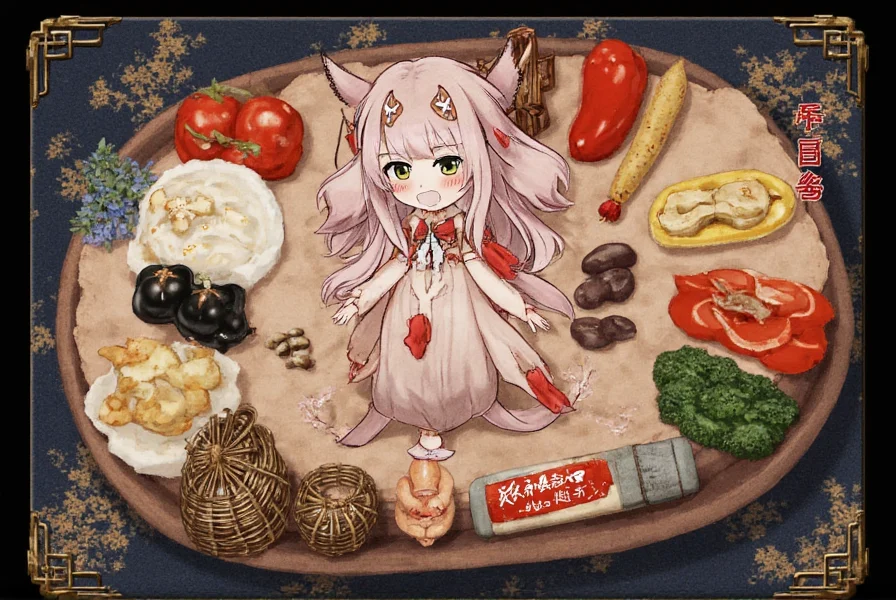Mexican cuisine varies significantly by region, with each area using distinct chile varieties that define unique flavor profiles and heat levels. This guide details the primary chiles used in Northern, Central, and Southern Mexico, including accurate Scoville ratings, flavor characteristics, and practical cooking applications.
| Region | Typical Chiles | Heat Level (Scoville Scale) | Flavor Profile |
|---|---|---|---|
| Northern Mexico | Pequin, Guajillo, Pasilla | 1,000–60,000 SHU | Smoky, fruity, robust |
| Central Mexico | Ancho, Poblano, Chipotle | 1,000–8,000 SHU | Balanced, earthy, sweet-spicy |
| Southern Mexico | Chilhuacle, Costeño Amarillo, Chiltepin | 1,000–100,000+ SHU | Complex, floral, tropical |

Northern Mexico: Bold Flavors in Dry Heat
The northern states like Chihuahua, Coahuila, and Sonora feature arid climates that favor dried chiles and hearty meat dishes. Regional chiles are known for their robust, smoky profiles.
Signature Chiles:
- Pequin (30,000–60,000 SHU): Tiny but intensely hot; used in salsas and marinades.
- Guajillo (2,500–5,000 SHU): Fruity and smoky; essential for adobos and braises.
- Pasilla (1,000–2,500 SHU): Earthy and mild; ideal for mole sauces and stews.
Cooking Style:
- Grilled meats (like arrachera) seasoned simply with salt and chile powder.
- Slow-cooked braises showcasing concentrated flavors from dried chiles.
- Oil-based salsas with intense aroma and moderate heat.

Central Mexico: Where Tradition Meets Balance
Central Mexico (Puebla, Mexico City) is the heart of traditional mole preparation, where heat is carefully balanced with sweetness and complexity.
Signature Chiles:
- Ancho (1,000–1,500 SHU): Sweet and raisin-like; foundational for mole negro.
- Poblano (1,000–1,500 SHU): Mild and versatile; used fresh or dried (as ancho).
- Chipotle (2,500–8,000 SHU): Smoked jalapeño; adds depth to salsas and braises.
Cooking Style:
- Mole poblano combines up to six chile types for layered heat and sweetness.
- Tamales and chiles rellenos showcase slow-cooked sophistication.
- Tomatillo-based green salsas with serrano peppers provide tangy freshness.
Southern Mexico: Earthy, Smoky, and Complex
Southern regions (Oaxaca, Chiapas, Veracruz) utilize fermentation, smoke, and unique chiles for deeply complex flavors.
Signature Chiles:
- Chilhuacle (1,000–5,000 SHU): Rare Oaxacan chile; essential for traditional mole negro.
- Costeño Amarillo (10,000–25,000 SHU): Vibrant yellow chile with sharp, lingering heat.
- Chiltepin (50,000–100,000+ SHU): Wild, tiny chile; used in coastal dishes and salsas.
Cooking Style:
- Blackened tortillas and banana leaf-wrapped dishes for smoky infusion.
- Seafood ceviches with coastal chiles for bright, spicy notes.
- Traditional Oaxacan moles using rare chiles like Chilhuacle for depth.

Heat Levels Across Mexican Regions: Accurate Comparison
Scoville Heat Units (SHU) measure chile intensity. This table reflects verified data from agricultural studies and culinary experts:
| Region | Typical Chiles | Heat Level (Scoville Scale) | Flavor Profile |
|---|---|---|---|
| Northern Mexico | Pequin, Guajillo, Pasilla | 1,000–60,000 SHU | Smoky, fruity, robust |
| Central Mexico | Ancho, Poblano, Chipotle | 1,000–8,000 SHU | Balanced, earthy, sweet-spicy |
| Southern Mexico | Chilhuacle, Costeño Amarillo, Chiltepin | 1,000–100,000+ SHU | Complex, floral, tropical |

Buying Guide: Choosing Authentic Regional Chiles
For authentic results, match chiles to their regional specialties:
1. Dried Chile Packets
- Oaxacan Mole Kit: Includes Ancho, Mulato, and Pasilla chiles for balanced heat and chocolate notes.
- Use Case: Perfect for mole negro or rojo; ideal for home cooks seeking authenticity.
2. Smoked Chiles
- Whole Chipotle Peppers in Adobo: Smoked jalapeños in tangy sauce; adds instant smokiness.
- Use Case: Great for salsas, soups, and grilled vegetables; popular among barbecue enthusiasts.
3. Specialty Chiles
- Chilhuacle Rojo Powder: Rare, hand-harvested in Oaxaca; irreplaceable for traditional moles.
- Use Case: Reserved for gourmet dishes and professional chefs; available through specialty importers.

Spice Tips: How to Use Regional Chiles Like a Pro
- Roast Before Using: Lightly toast dried chiles in a dry pan to enhance flavor.
- Soak Smartly: Use warm broth (not boiling water) to rehydrate chiles without dulling flavor.
- Balance Heat with Fat: Add avocado, cream, or cheese to temper intense spice while preserving flavor.
- Build Layers: Combine multiple chile types for complex sauces (e.g., Ancho + Chipotle for mole).
- Store Properly: Keep dried chiles in airtight containers away from light; they last up to 1 year.
- Match Regional Ingredients: Pair chiles with traditional ingredients like cacao, corn, and vanilla for authenticity.
Frequently Asked Questions About Mexican Regional Spices
Conclusion: Embrace the Fire, Respect the Roots
Mexican cuisine’s diversity is rooted in regional terroir and tradition. By understanding the distinct chiles of Northern, Central, and Southern Mexico—from the smoky Guajillo of the north to the rare Chilhuacle of Oaxaca—you can authentically recreate regional flavors while respecting culinary heritage.
Next time you cook, prioritize accuracy: use verified chile varieties, correct heat levels, and traditional techniques. Spice isn’t just heat—it’s the heartbeat of Mexico’s cultural identity.










 浙公网安备
33010002000092号
浙公网安备
33010002000092号 浙B2-20120091-4
浙B2-20120091-4